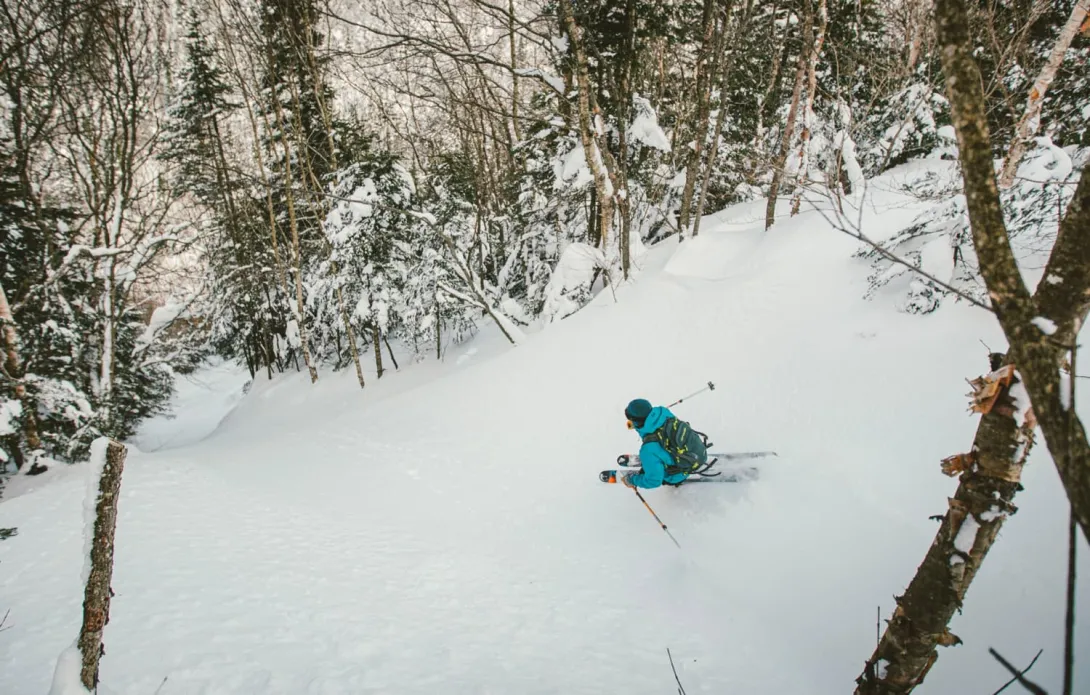
Skiing powder is everybody’s dream, but it is a slightly different ball game than skiing on hard groomed snow. In order to glide gracefully over top of powder rather than sink your skis into it, you’ll need slightly different gear and to learn a different technique.
As a prerequisite, you’ll need to feel comfortable skiing in hard groomed snow. You need to know how to maintain your balance and feel comfortable controlling your skis before you can handle skiing powder. You should also be comfortable skiing parallel and making a hockey stop.
Once you’ve mastered the prerequisites, you’re ready to ski powder.
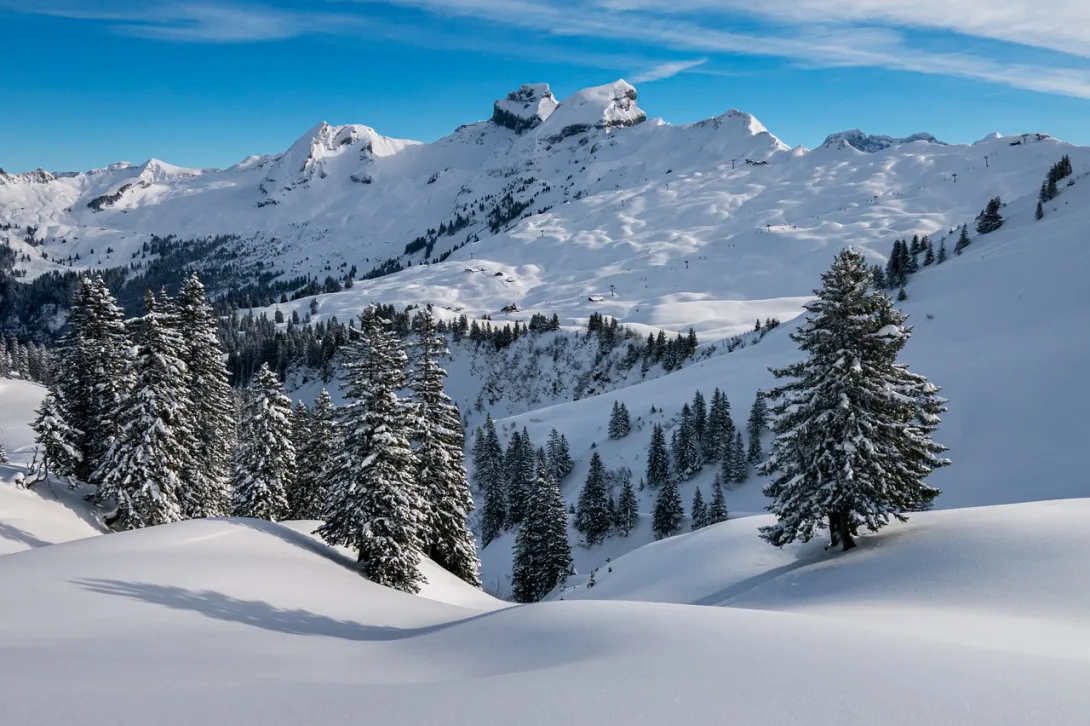
Keep reading for a full beginner’s guide to skiing powder! Learn the technique, how to combat common mistakes, and our top three tips to ski powder like a pro.
Gear
When you transition to skiing powder, you’ll want to transition to a longer and wider ski. The longer ski will help you ski faster, while the wider ski will have greater surface area, allowing you to float easier and glide above the snow rather than sink into it.
Skis that are made specifically for powder have a shorter edge and a rocker in both the tail and tip. Together these make it easier to turn in powder. The shorter edge makes it easier to pivot your ski while the rocker makes it so that less of your actual ski is touching the snow as you turn.
I recommend renting some powder skis when learning to ski on powder as it’ll make your experience much easier.
Technique
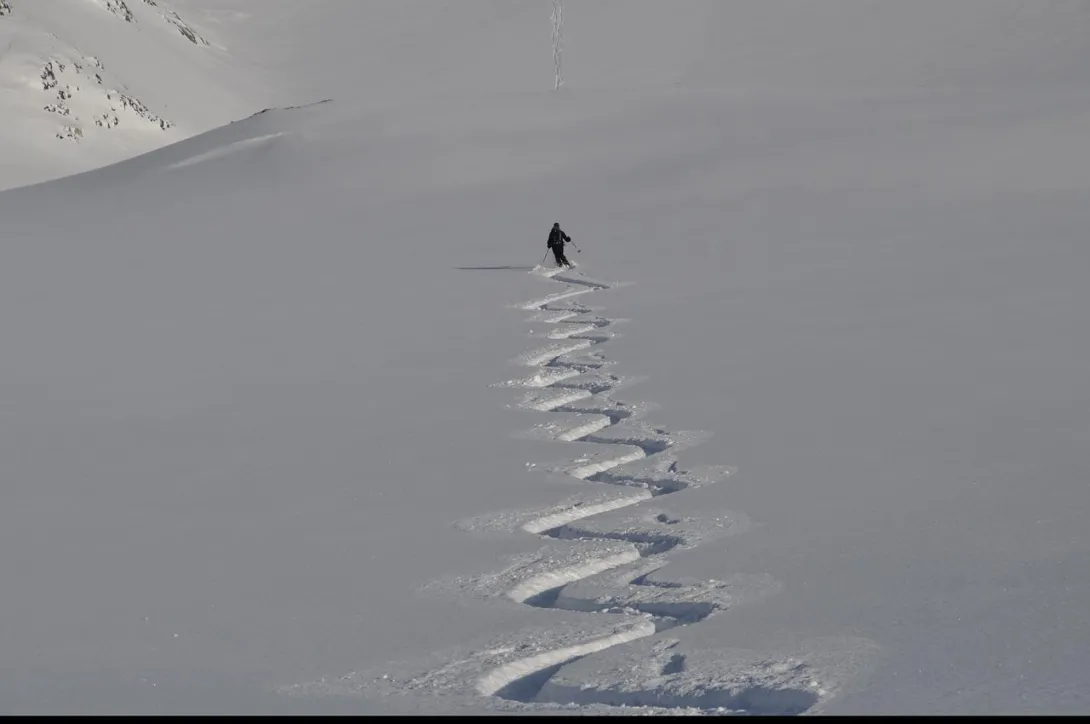
Skiing powder requires a different technique to skiing in hard snow as it requires more effort to glide on top of the snow rather than sink into it.
Skiing powder requires more even weight distribution where you stay centered over the top of your skis and maintain a narrower stance. It’s helpful to think of skiing on one large ski that you are steering with your thighs rather than shifting your weight to one side and relying on edges.
When skiing powder, you need to maintain a faster speed by staying in the fall line and making larger more rounded turns rather than skiing in a zig zag pattern. Overall, you want to be sure to maintain balance and control to the middle as best as possible and aim to stay on top of the snow as best as possible.
Turning
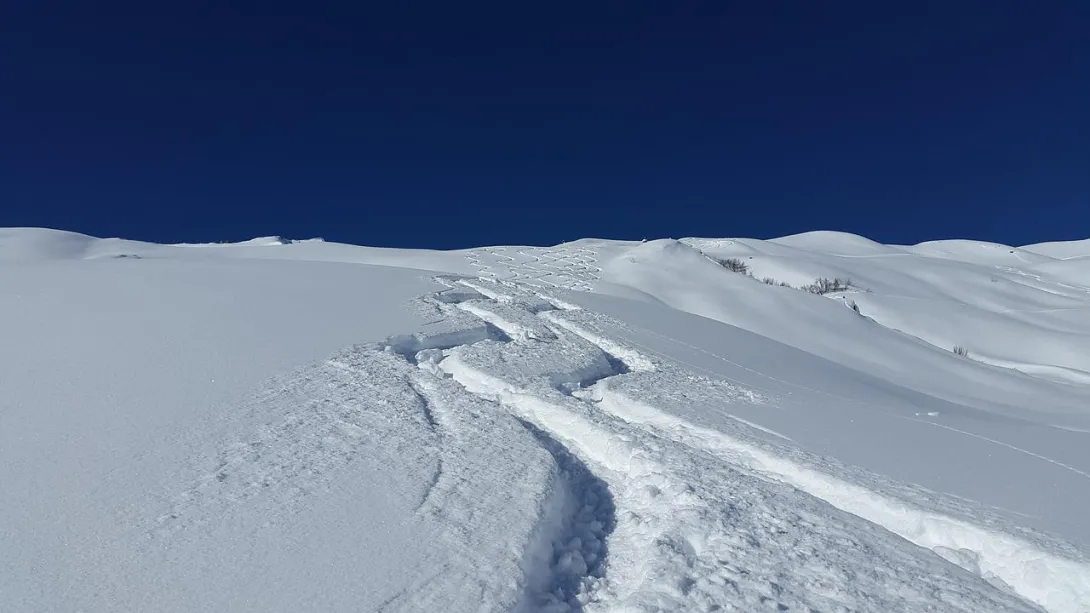
When turning, you want to be sure to make more rounded S turns rather than sharp zig zag patterns and stay on top of your skis rather than leaning forward or shifting your weight to one side like you would when skiing on hard snow.
It’s important that you keep your tips up and create an even surface so you can maintain your speed throughout your turns and not sink into the snow.
Common Mistakes
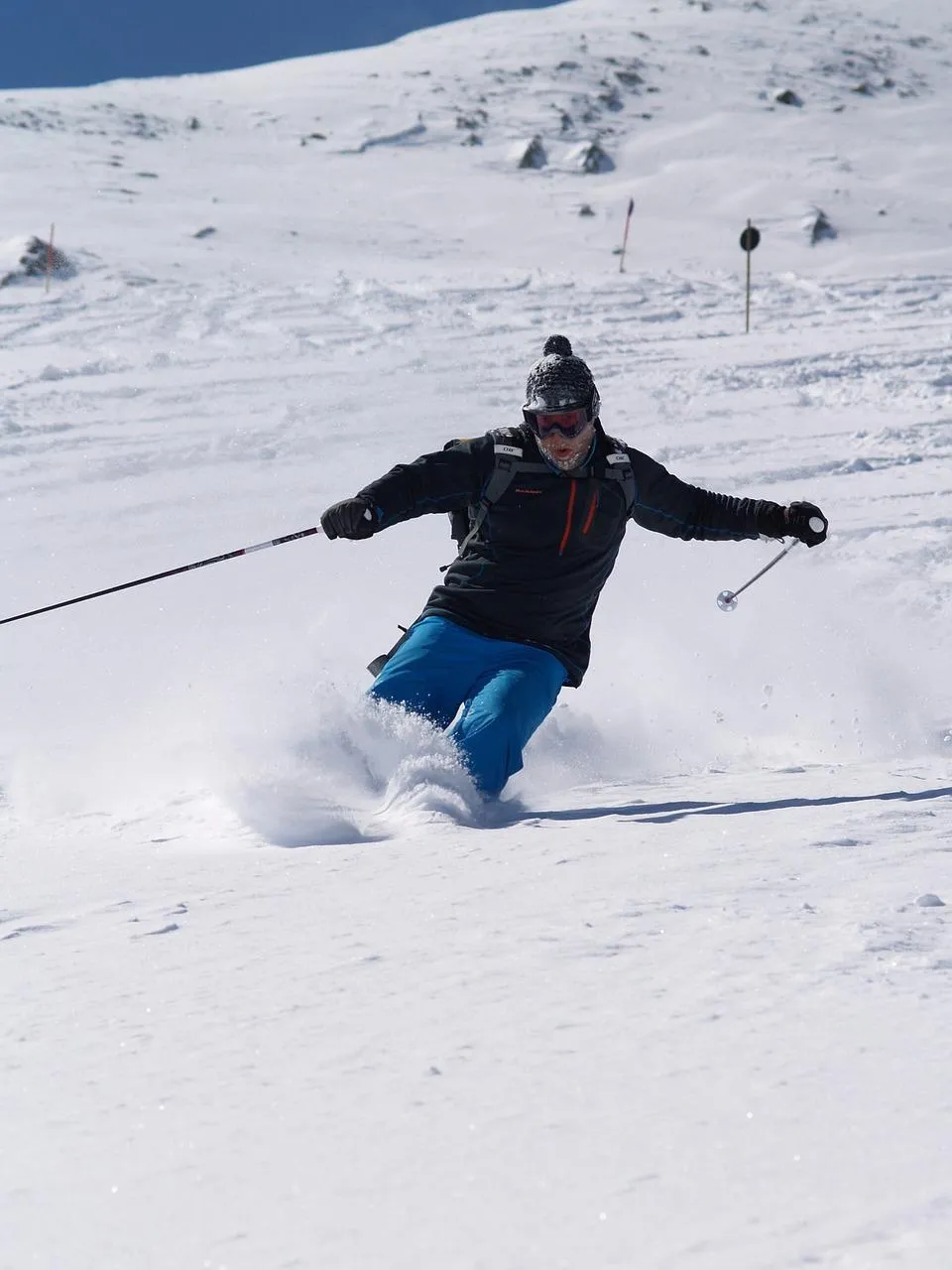
Slowing Down The Speed
It’s normal to want to slow things down when you’re just getting comfortable, but when it comes to skiing powder faster is better. If you don’t have enough momentum when skiing powder, you will sink into the snow rather than stay on top of it. If you’re struggling with sinking, ski faster.
Uneven Weight Distribution
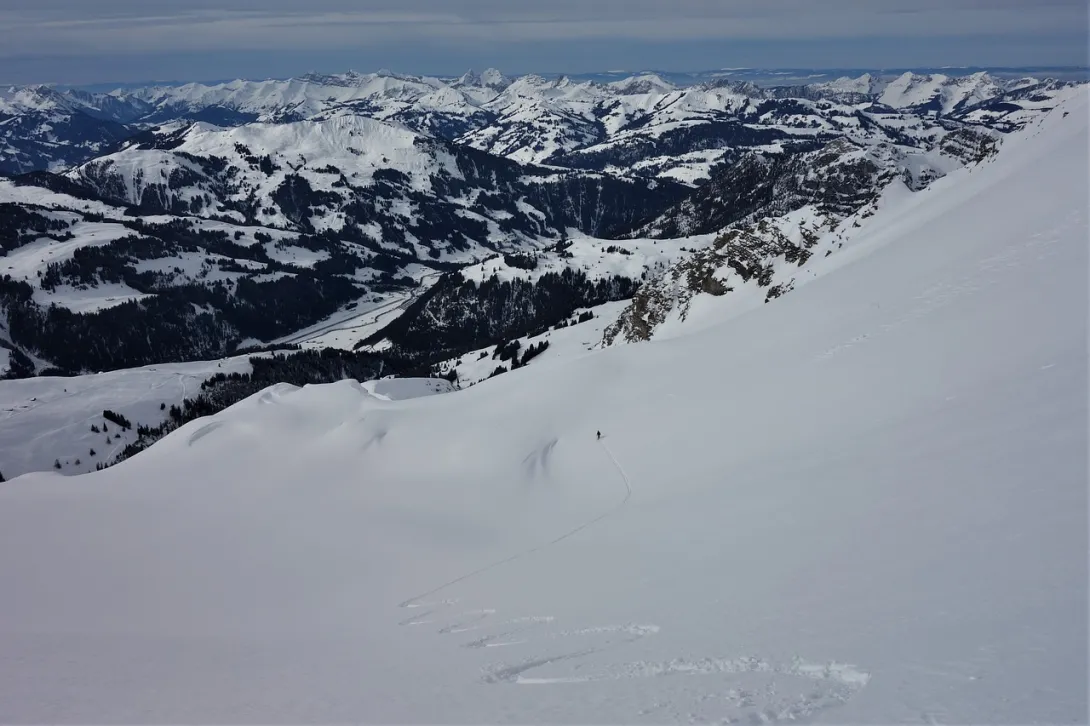
How your weight is distributed is the biggest difference between skiing on groomed slopes and skiing in powder.
When skiing on groomed slopes you put all the pressure onto the edge of one ski. When skiing powder, it’s important that your weight stays distributed evenly across both skis. If you shift too much pressure onto one ski over the other, there is a greater chance that one will sink into the snow or get away from you.
A good tip to combat this is to imagine that you are only riding one big ski instead of two separate skis. Stay on top of them and remain light in order to glide gently down the mountain.
Your Stance Is Too Wide
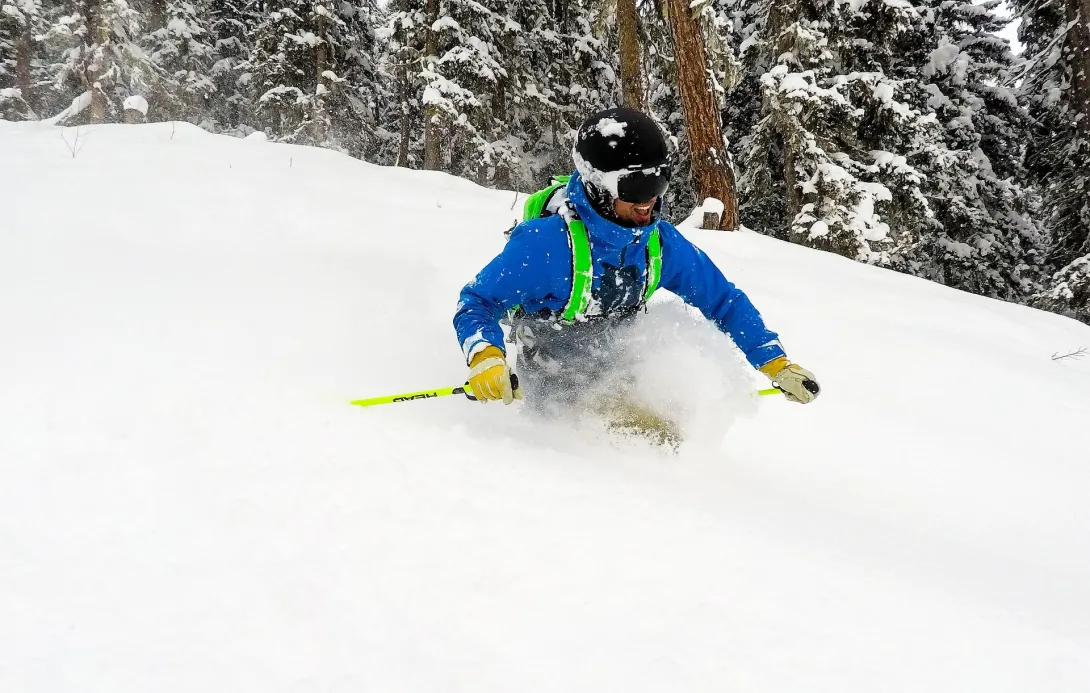
Skiing powder requires a narrower stance than skiing on groomed slopes. When your stance is too wide, it’s harder to turn and easier for one ski to trail off which can throw off your balance or even lead you spinning into a crash.
Your skis shouldn’t be touching, but they need to be narrower than your regular stance.
To start, aim for your stance to be a hands width narrower and play around with how it feels until you find a stance that is most comfortable for you.
You Get In Your Head
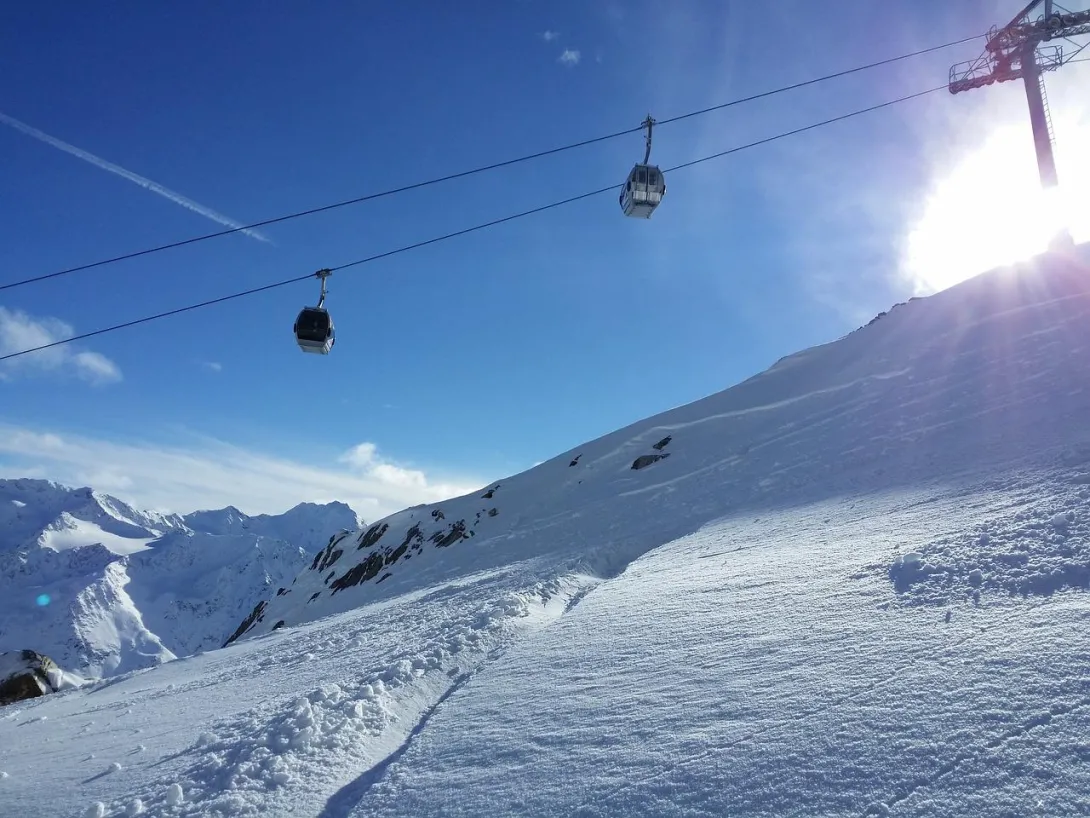
Breathe, relax, and be humble. Don’t forget how to be a beginner. You’re not going to be amazing at skiing on powder when you first start learning.
You’re going to fall a lot, just like you did when you learned how to ski on hard snow. But each time you get up and try again, you’ll fall less and less until you finally feel comfortable. Just keep practicing and you will succeed!
Top Tips
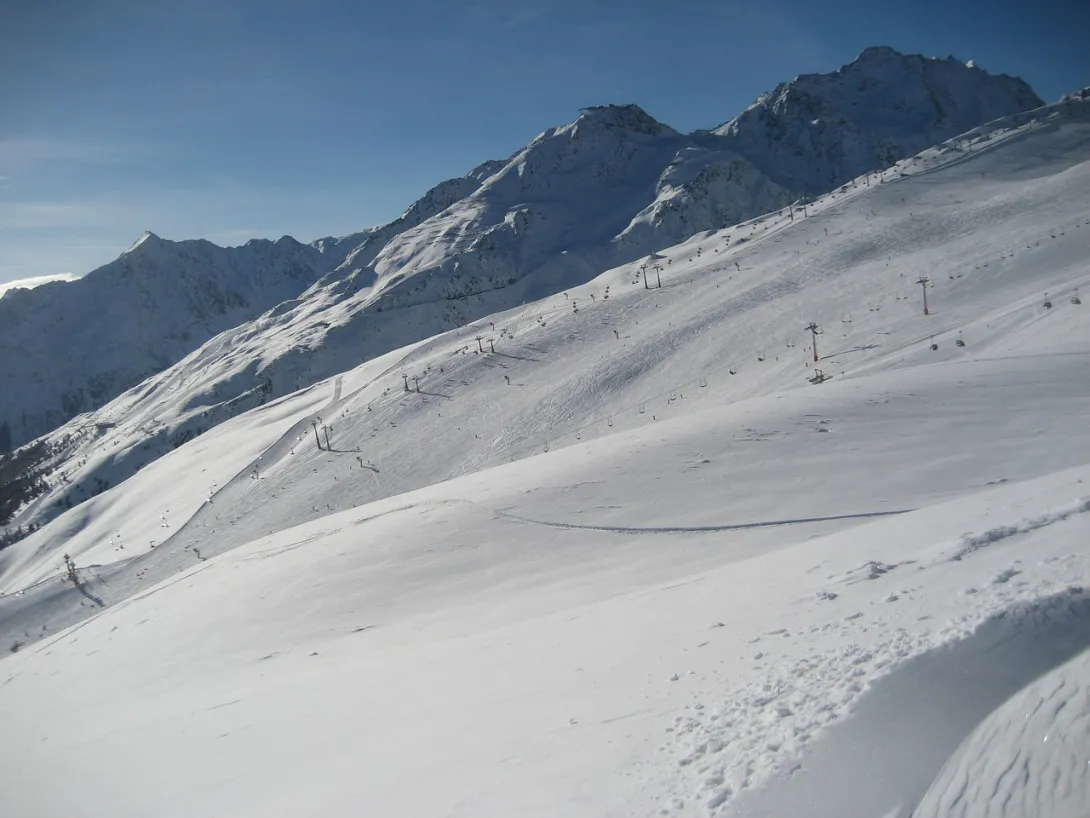
Stay In The Fall Line
The fall line will be the quickest way down, meaning when you stay in this zone you have less of a chance of sinking into the snow. Do your best to make smaller crescent-like turns rather than large zigzag patterns down the mountain.
Maintain Your Speed
If you’re sinking into the snow while turning, you’re likely not maintaining your speed. Instead, aim to make smooth, rounded S turns and avoid sharp zig zag patterns as these will cause you to turn slower and get bogged down in the snow.
Create a Platform For Success
Before you master anything else, you need to build a solid foundation to stand on and get comfortable with it.
Get comfortable in a narrower stance with even pressure throughout your skis. Stay above your skis rather than leaning too far forward or too far back and be sure to maintain equal pressure on both feet. This will allow you to stay on top of your skis while sailing down the mountain and have less of a risk of having one ski stray away from you or sink into the snow.